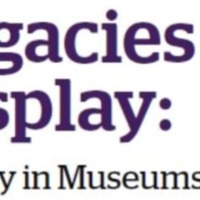
America's Black Holocaust Museum
The museum was founded in 1984 by Dr James Cameron, a self-taught historian and public speaker. The only known survivor of a lynching, Dr Cameron used his survival experience to provide visitors with a unique view of ‘living history’. Alongside this, he expanded the museum’s exhibits and employed staff, attracting local, national and international visitors. Unfortunately, the site closed following Dr Cameron’s passing in 2006 and the economic downturn of 2008. Since 2012 America’s Black Holocaust Museum has existed as a virtual museum. It seeks to educate the public of injustices suffered by people of African-American heritage, while providing visitors with an opportunity to rethink their assumptions about race and racism. It offers a range of online exhibitions, including one about the history of the museum, and another on the perpetuation of slavery through three centuries.
There are nine exhibitions available to be accessed within the virtual museum, seven of which are a chronological study of the history of Africans in America. All of them feature the museum’s four key themes: remembrance, resistance, redemption and reconciliation. Beginning with a view of life in Africa prior to enslavement, they end with an exhibition entitled ‘Now- Free at Last?’ which considers the experiences of African Americans from the 1980s up to the present day. In addition to the chronological displays, there are three special exhibitions, two of which are concerned with the victims of lynching. Within the website there are photographs, and images of objects, alongside suggestions of further reading material. There is also a section of relevant and important news articles. The virtual museum is a member of the international Coalition of Sites of Conscience, and the Association of African American Museums. The museum runs a programme of events and speakers, and is due to re-open in a physical building in Milwaukee during the Autumn of 2018.